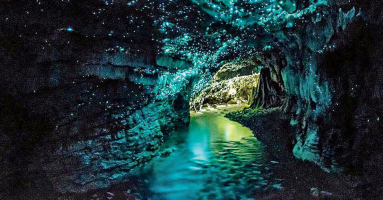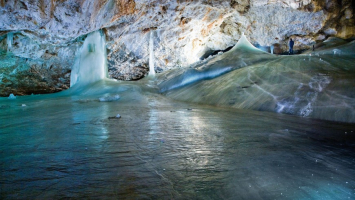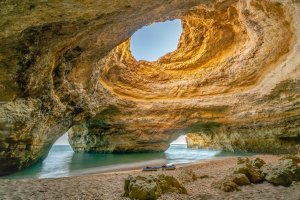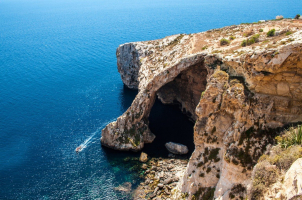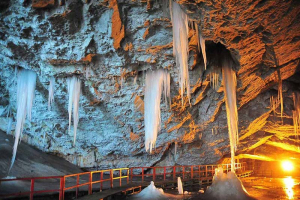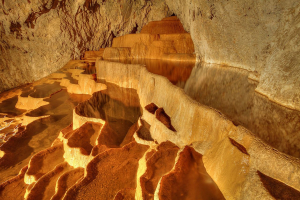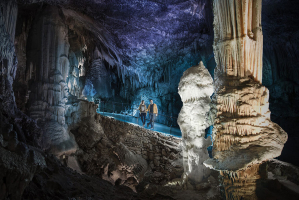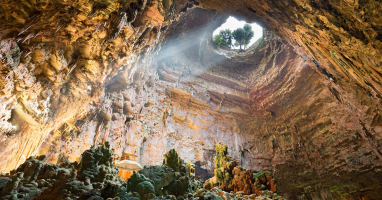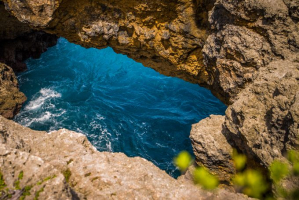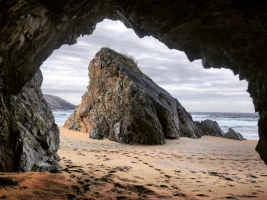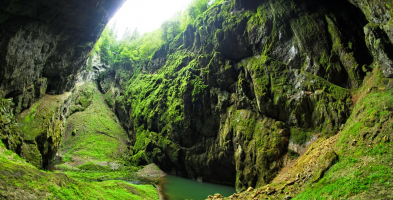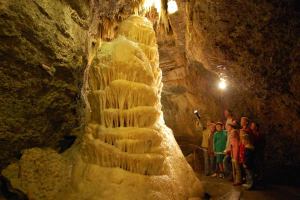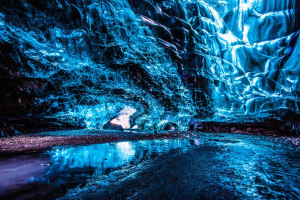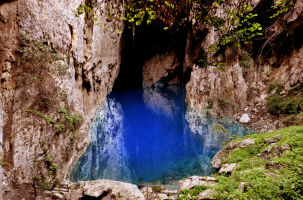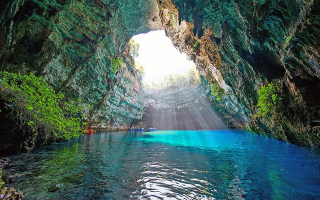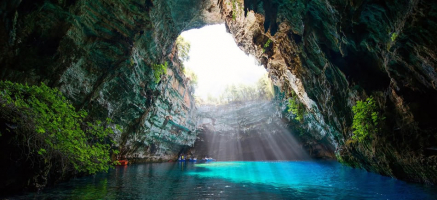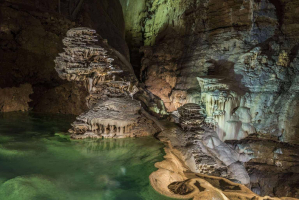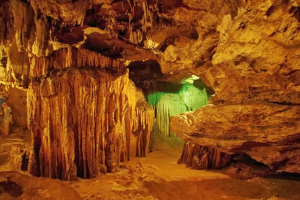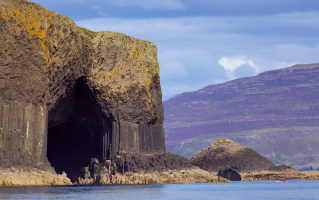Top 12 Best Beautiful Caves In India
India is home to a lot of caves that can be found all over the country. Some are natural caves, while others were hand-carved into the rock hundreds of years ... read more...ago. The caves offer a wide range of experiences, from historical to spiritual, making them attractive to many visitors. The Archaeological Survey of India maintains a number of caves, so be prepared to pay an admission fee. This is a list of the most beautiful caves in India that you cannot ignore
-
Ajanta Ellora Caves top the list of the most beautiful caves in India. The Ajanta and Ellora caves are located near Aurangabad in Maharashtra, India, and are considered one of the best examples of ancient rock-cut caves. The Ajanta and Ellora caverns complex contains Buddhist monasteries, Hindu and Jain temples, as well as exquisite sculptures, paintings, and murals. The Ajanta Caves are 29 in number and were constructed between the 2nd century BC and the 6th century AD, whilst the Ellora Caves are 34 in number and date from the 6th to 11th centuries AD.
The caves of Ajanta and Ellora are UNESCO World Heritage Sites and are visited by tourists from all over the world. The Ajanta Caves are predominantly Buddhist sites and were used as a retreat by Buddhist monks. They are located roughly 99 kilometers north of Aurangabad. Ellora is about 15 kilometers west of Aurangabad and contains a more diverse collection of Hindu, Jain, and Buddhist sites. The Indian rulers of the time built and financed these hand-carved caves, which were nearly concealed by dense trees. The Kailash Temple, which is also the world's single most gigantic monolithic building, is one of the most famous destinations in the Ajanta and Ellora Caves. Some of the outstanding specimens of ancient Indian architecture and sculpture may be seen in these rock-cut caverns with carvings.
Location: Ellora Cave Rd, Ellora, Maharashtra 431102, India
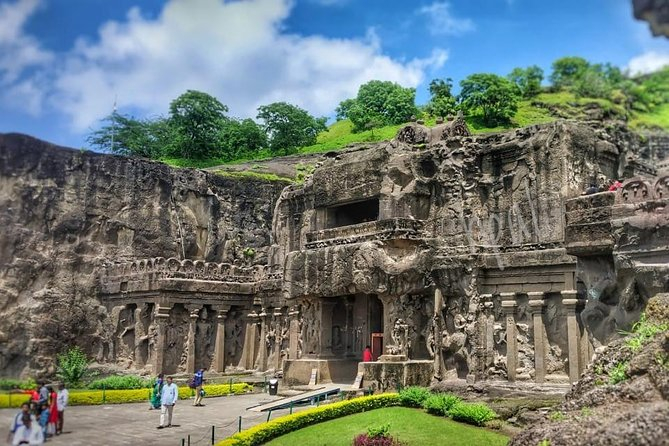
viator.com 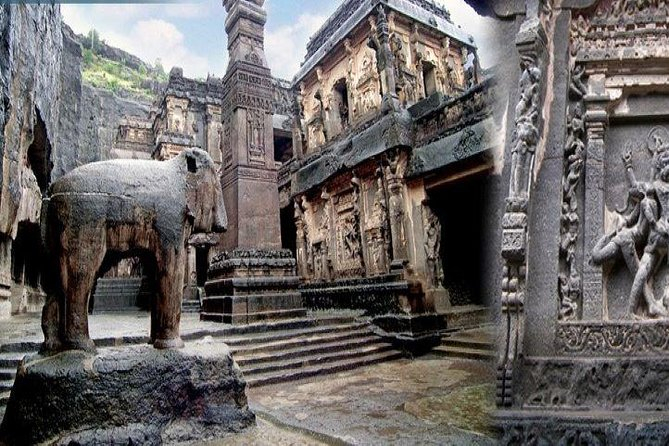
viator.com -
Elephanta Caves, a UNESCO World Heritage Site, is a fine example of medieval India's rock-cut art and architecture. The caves are located on the Elephanta or Gharapuri island, which is 11 kilometers from Mumbai. The Elephanta Caves, also known as Gharapurichi Leni, are the ruins of what were previously magnificently painted artworks. It also offers a spectacular perspective of the Mumbai skyline. The Elephanta Caves are accessible via ferry from the Gateway of India. The majority of the cave temples in this collection date from the 5th to 7th centuries and are dedicated to Lord Shiva.
The Elephanta Caves complex has two groups of alcoves, the first of which is a huge group of five Hindu caves and the second of which is a smaller group of two Buddhist caves. Stone sculptures of the Shaiva Hindu religion can be found in the Hindu caves. The caverns are an expression of art, with a number of important imageries sculpted here, including 'Trimurti' or three-headed Shiva, 'Gangadhar,' which is a manifestation of the river Ganga as she falls to the earth, and 'Ardhnareshwar,' which is a portrayal of Shiva and Parvati in one body. The Elephanta Caves are a unique trekking destination in addition to being a significant historical monument.
Location: Elephanta Island, Maharashtra, India
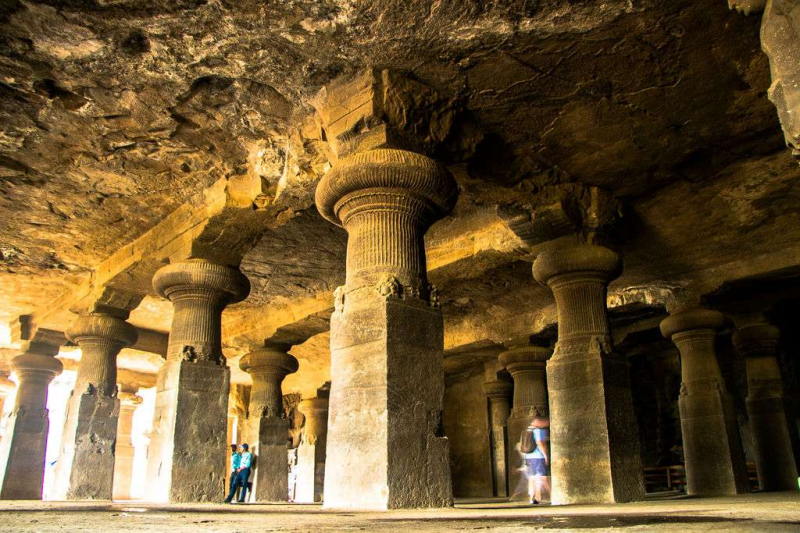
tripsavvy.com 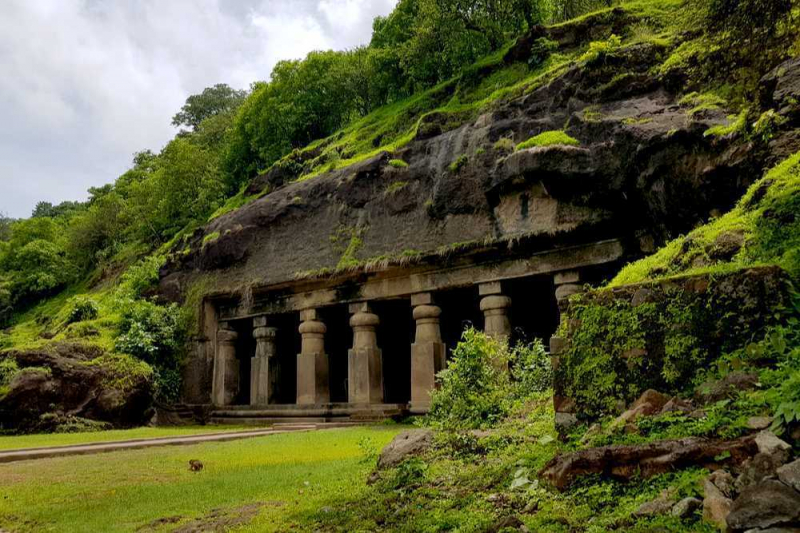
holidify.com -
The Badami ranks 3rd in the list of the most beautiful caves in India. The Badami cave temples are located in Badami, Karnataka, India, in the north-central region. The temples lie around 87 miles (140 kilometers) northwest of Hampi and 88 miles (142 kilometers) east of Belgavi (IATA Code: IXT). 3 miles (4.8 km) away is the Malaprabha River. The cave temples are 14 miles (23 kilometers) from Pattadakal, a UNESCO world heritage site, and 22 miles (35 kilometers) from Aihole, another site with over a hundred Hindu, Jain, and Buddhist monuments from the ancient and early medieval periods.
Badami, the Chalukyas' former capital, is home to a number of 6th and 7th century temples, some structural and others rock-cut. Pulakeshi I (535 – 566 AD) constructed the foundations of Badami, or Vatapi as it was known, while his son Kirtivarman I (567 – 598 AD) embellished the town with temples and other structures. On the occasion of the installation of the image of Vishnu, Mangalesha (598–610 AD), Kiritavarman I's brother, completed the cave temples' construction and gifted the temples with the village. Pulakeshi II (610-642 AD), the dynasty's strongest emperor, conquered the Pallava King Mahendra Verman I, among others. To avenge their defeat, the Pallava seized and destroyed Badami. The Vijayanagar Kings, the Adil Shahis, the Savanur Nawabs, the Marathas, Hyder Ali, and eventually the British, who made it part of the Bombay Presidency, all had Badami under their control.
Location: Badami, Karnataka, India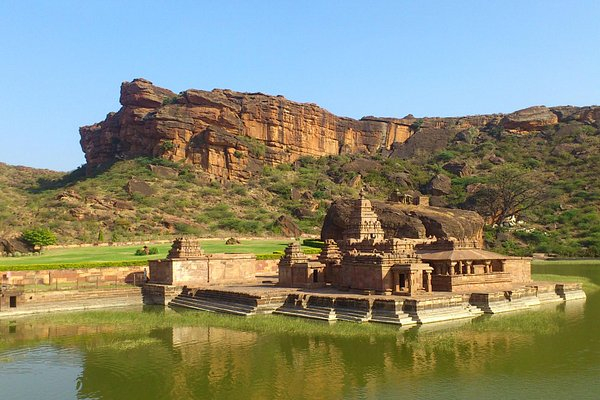
tripadvisor.com.vn 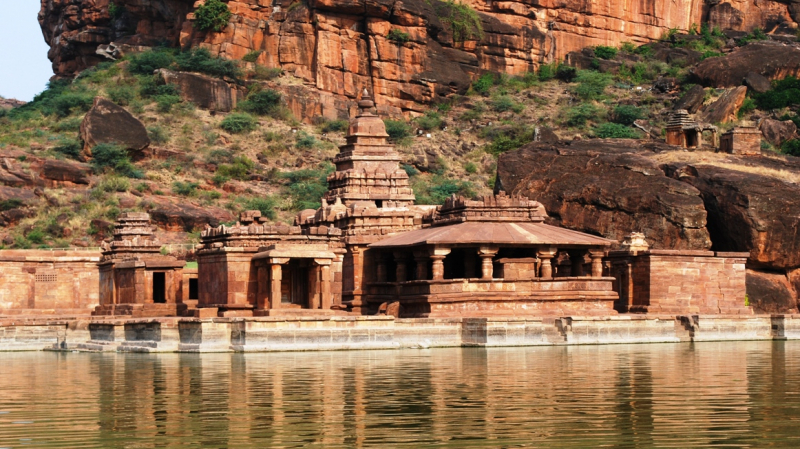
en.wikivoyage.org -
Bhimbetka rock shelters are a group of natural rock shelters located in the Vindhya Range's foothills in central India. They are located in west-central Madhya Pradesh, around 45 kilometers south of Bhopal. The complex, which was discovered in 1957 and consists of over 700 shelters, is one of India's major prehistoric art collections. In 2003, the shelters were named a UNESCO World Heritage Site. The Ratapani Wildlife Sanctuary surrounds the complex.
The sandstone rock in the Bhimbetka region is studded with massively carved structures. 243 shelters have been explored on the Bhimbetka site's hill alone, where the most of the archaeological research has been centered since 1971, with 133 of them containing rock art. Archaeologists have discovered a great number of artifacts in the caves, dense teak forests, and cultivated fields surrounding Bhimbetka, the oldest of which are Acheulean stone tool assemblages.
The paintings are divided into prehistoric periods and demonstrate a great deal of liveliness and narrative talent. The oldest are enormous linear images of rhinoceroses and bears from the Late Paleolithic Period (Old Stone Age). Mesolithic (Middle Stone Age) paintings are smaller and depict human activities in addition to animals. Early human notions of agriculture are depicted in drawings from the Chalcolithic Period (early Bronze Age). Finally, religious motifs such as tree gods and magical sky chariots are depicted in decorative paintings dating back to early historical periods. The caverns offer a rare look into the evolution of culture from early nomadic hunter-gatherers to established cultivators to spiritual expressions. The current cultural customs of agrarian peoples living in the villages near Bhimbetka have been seen to reflect those shown in the paintings.
Location:Bhojpur Raisen, Madhya Pradesh 464990, India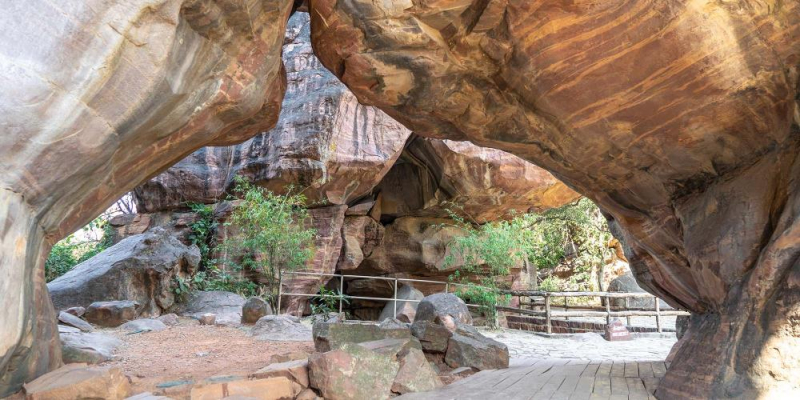
fabhotels.com 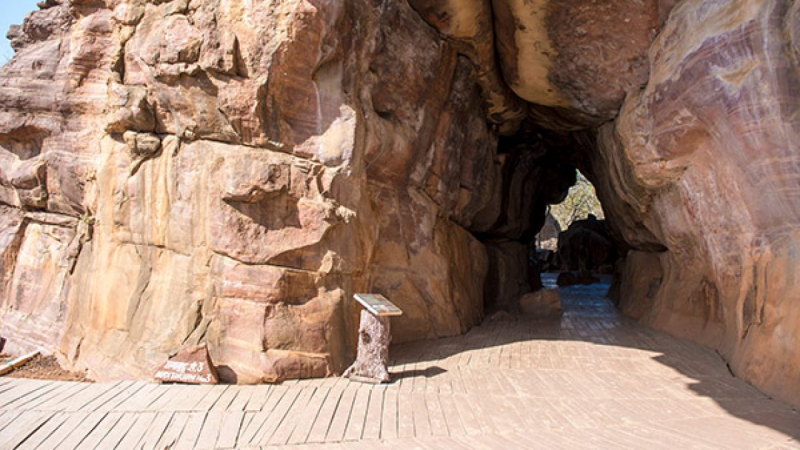
visitworldheritage.com -
The caves of Meghalaya, in northeast India, are well-known. Over 1,000 of them have been investigated! Mawsmai Cave, in Cherrapunji, is the most accessible (two hours from Shillong). It is kept in good repair as a tourist attraction and is illuminated throughout. The other caves are more difficult to explore and need caving expeditions with the proper equipment. Siju, Mawmluh, Mawsynram, and Liat Prah are among them (the longest cave in India). In Meghalaya, the world's longest sandstone cave, Krem Puri, was recently discovered and surveyed. A list of caves in Meghalaya is available from Meghalaya Tourism. The Meghalaya Adventurers' Association (email: matours@rediffmail.com) conducts week-long caving expeditions from Shillong. Thrillophilia offers various caving tour packages. Kipepeo also arranges customizable caving trips.
Meghalaya has a cave system unlike any other known karst (or limestone-dominated environment) in India. A steep plateau with elevations of over 1000m, a terrain rich in limestone, and an abundance of rainfall during the monsoon, among the highest recorded in the world, combine to make Meghalaya unique. These subterranean habitats are fragile and mysterious, generated by an extraordinarily slow process of water erosion - the wearing away of limestone or calcium carbonate bedrock over millions of years. These caverns, known as solution caves, form in sheets of solid limestone found below the surface, similar to the caves we explored near Lumsnang. In some circumstances, solution caves can form in soluble sedimentary rock strata as well.
Cave formation is a fascinating process. Rainwater generates a weak acidic solution when it reacts with ambient carbon dioxide and other gases in the soil. This gently acidic water dissolves calcite, the most common mineral found in limestone, to gradually carve out vast spaces and, in certain cases, sophisticated cave systems, either as underground rivers or as groundwater.
Location: Meghalaya, in northeast India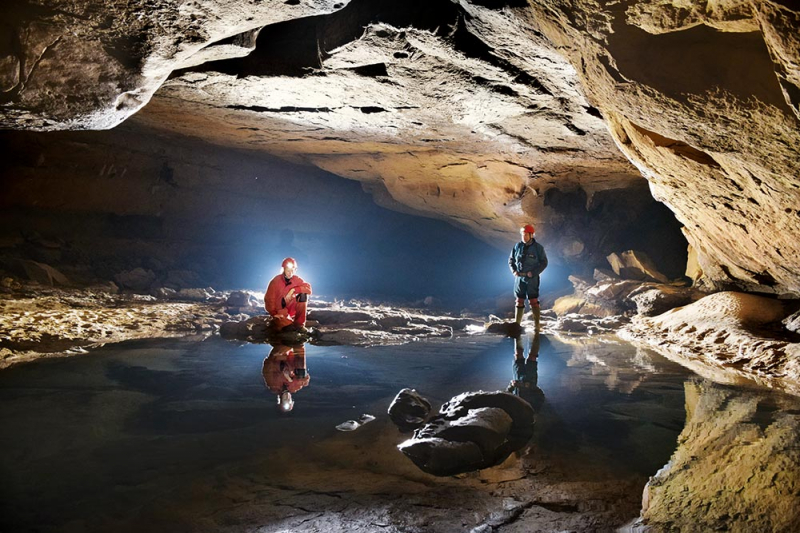
outlookindia.com 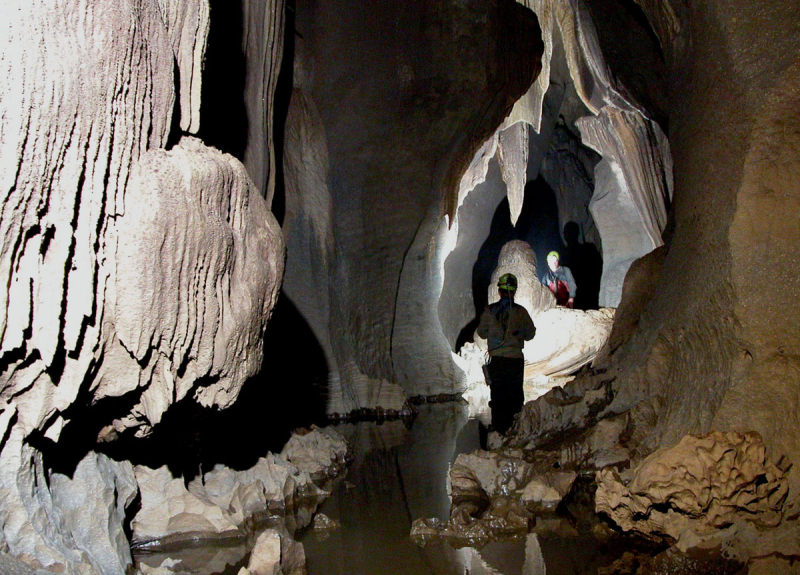
en.wikipedia.org -
The Kailash and Kotumsar caves in Chhattisgarh's Bastar area are also among the world's longest. Within Kanger Vally National Park, about an hour from Jagdalpur, these limestone caves continue deep down. The biggest of the two caves is Kotumsar Cave. Because the caves are tiny, slippery, and dark inside, the Forest Department regulates access. It is required that you travel with a tribal guide from the area. Only go if you're feeling brave and don't have claustrophobia! The caves are closed from June to the end of October during the monsoon season, when they fill with water.
The Kotumsar Caves are around 40 kilometers from Jagdalpur and are recognized for being the world's second-longest natural caves. The darkness inside grows as they descend deeper beneath. Stalactite and stalagmite rocks make up the structure. The caves are accessed through narrow staircases, and tourists must walk through lengthy, narrow rooms to reach the main hall, which is filled with magnificent melodies. It is also known as Guppanal or Kutmsar caverns, and it is related with many tribal stories. Due to a scarcity of oxygen, the Kailash and Kutumsar are only accessible to a certain extent. This natural cave is a sight to behold, surrounded by the thick Kanger National Park.
Location: near Jagdalpur, Indian, Chhattisgarh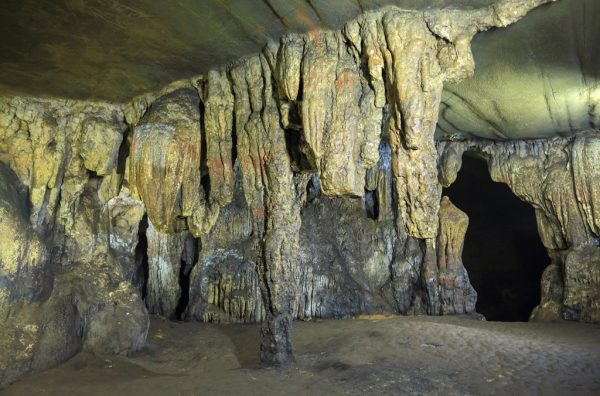
quora.com 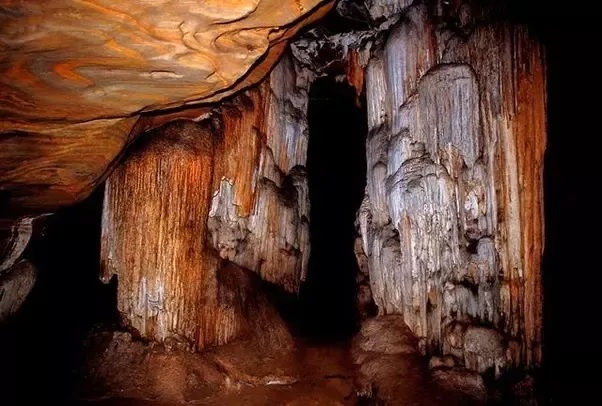
quora.com -
The Belum Caves in Andhra Pradesh are the world's second biggest cave system, notable for its speleothems, such as stalactite and stalagmite formations. Long tubes, galleries, huge caverns with fresh water, and siphons may be found in the Belum Caves. The steady flow of underground water from the now-disappearing river Chitravathi carved out this cave system over tens of thousands of years. At Pataalaganga, the cave system reaches its deepest point (46 m (151 ft) from the entry level). Belum Caves are the second largest caves on the Indian Subcontinent, after the Krem Liat Prah caves in Meghalaya, with a length of 3,229 meters (10,593.8 feet). It is one of the Monuments of National Importance that are centrally protected.
Belum was first discovered by a British surveyor, Robert Bruce Foote, in 1884, and a team of German speleologists led by H. Daniel Gebauer undertook a detailed excavation of the caverns from 1982 to 1984. Following that, the state government designated the site protected in 1988, and in February 2002, the Andhra Pradesh Tourism Development Corporation (APTDC) established the caves as a tourist destination. Only 1.5 km (0.9 mi) of the caverns are accessible to visitors, despite the fact that 3.5 km (2.2 mi) of the caves have been successfully explored. The caves contain quartz deposits and have 16 separate routes, including the main entrance. Black limestone makes up the caves.Location: Andhra Pradesh
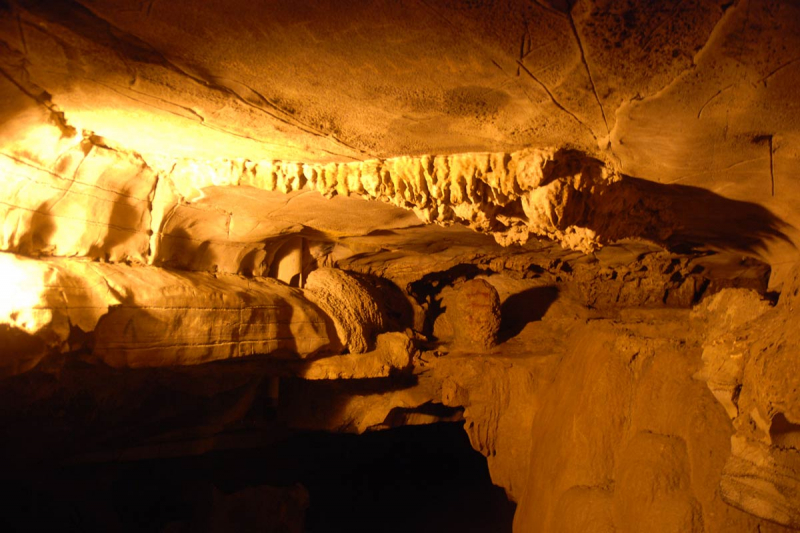
thenewsminute.com 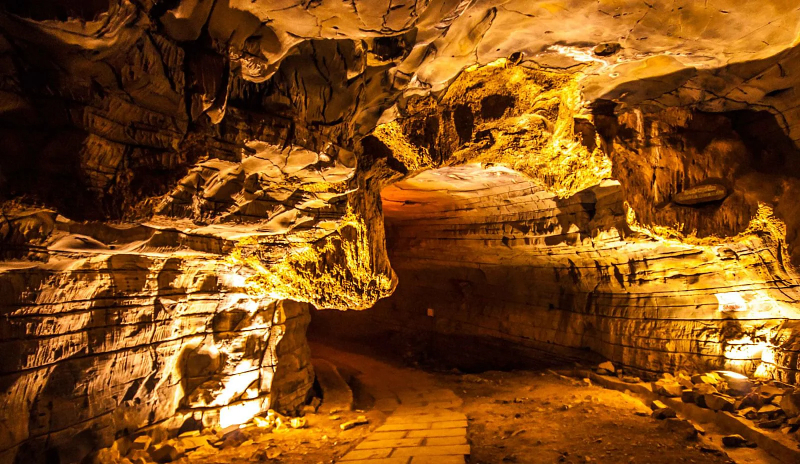
thebetterindia.com -
Borra Caverns is one of the largest caves in the Indian subcontinent, found in the Ananthagiri hills of the Araku valley of the Visakhapatnam district in Andhra Pradesh. Borra Caves are a one-square-kilometer cave complex located 92 kilometers north of Visakhapatnam. It is one of the largest caves in the Indian subcontinent and a must-see attraction for visitors to Araku Valley or Visakhapatnam. Borra Caves are located at a height of 800 to 1300 meters above sea level and have a horizontal opening of 100 meters and a vertical opening of roughly 75 meters. In the year 1807, British geologist William King discovered this million-year-old cave. The stunning hilly topography, amazing landscape, and flora and animals are what drew us here. This cave is the largest in India as measured by its geographical extent.
There are several stalactite and stalagmite formations, such as Shiv-Parvati, mother-child, human brain, and so on. Water percolates from the roof, containing calcium bicarbonate and other minerals from the mounds, forming stalagmites. The caverns are produced by continuous water flow over a lengthy period of time. Traveling by train to Araku will take you through a gorgeous environment of vegetation, peaks, and valleys. The train travels through 42 tunnels before arriving at Borra Guhalu Railway Station. You can see Katiki Waterfall before visiting Borra Caves, which is another must-see attraction.
Location: East Coast of India, in the Ananthagiri hills of the Araku Valley
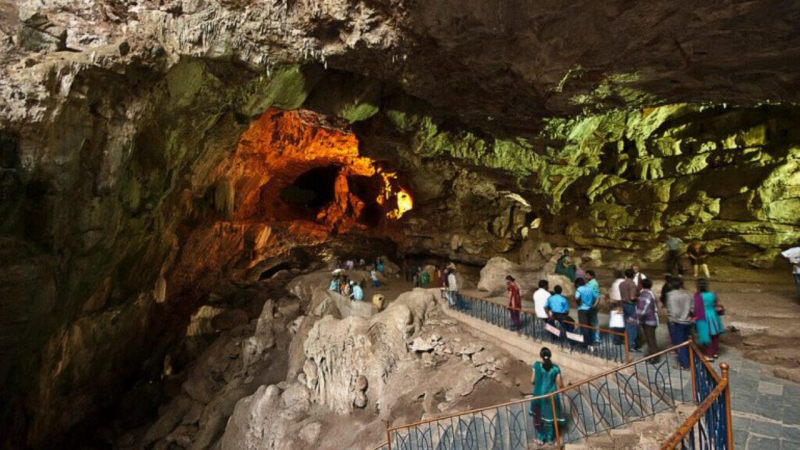
tripoto.com 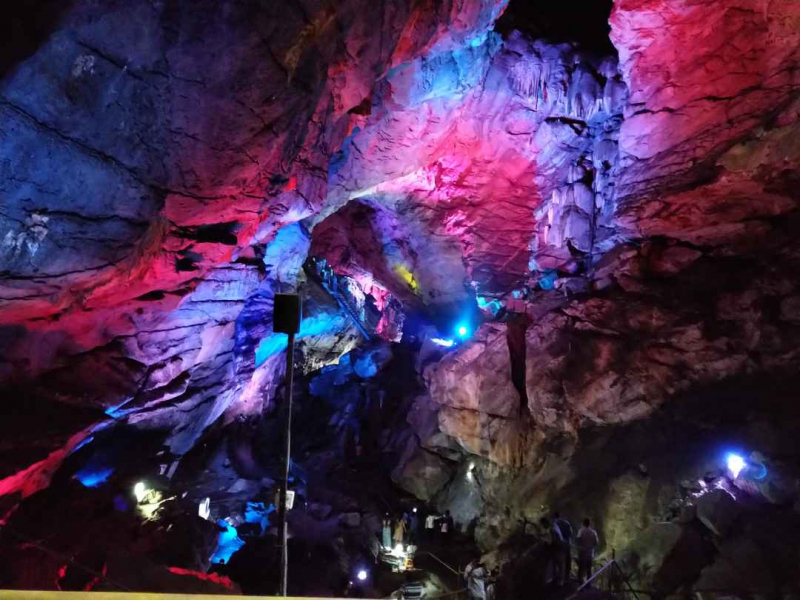
tripoto.com -
Undavalli caves were carved out of solid sandstone around the 4th to 5th centuries AD. Vishnukundin Kings created the Undavalli caverns, which are dedicated to Anantapadmanabha Swamy and Narisimha Swamy. These caves, which are located in the Undavalli hamlet of Guntur district, about 6 kilometers from Vijayawada, are a major tourist attraction. This structure is one of the most elaborate and intricate tributes to Vishwakarma Sthapathis and is an exquisite example of rock-cut architecture in South India.
There are a number of caverns here, but the most well-known and elaborate is a four-story edifice dedicated to Lord Vishnu. Lord Vishnu's idol is made of a single piece of granite and sits in a reclining position on the cave's second floor. The idol is approximately 5 meters long. There are several equally exquisite caves devoted to Lord Brahma, Shiva, and Vishnu in addition to the main cave. The major caves here were originally hollowed out to form a Buddhist monastery and have Gupta era architectural elements. The Undavalli caverns, which overlook the Krishna River, are surrounded by greenery.
Location: Tadepalle Mandal in Guntur District, Andhra Pradesh, India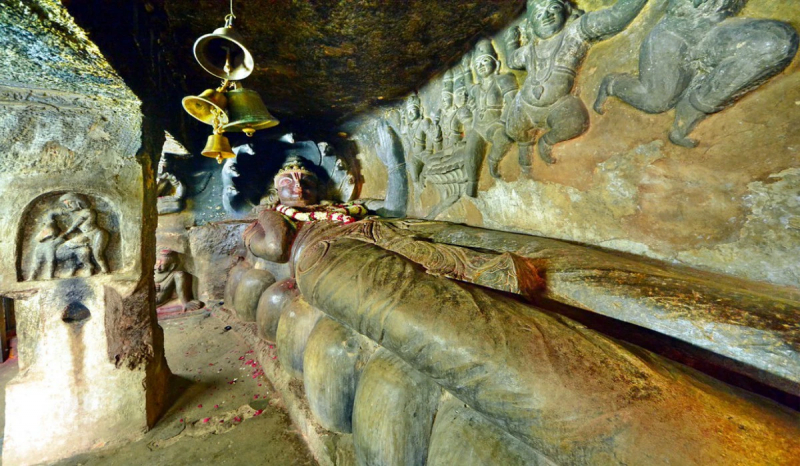
m.dailyhunt.in 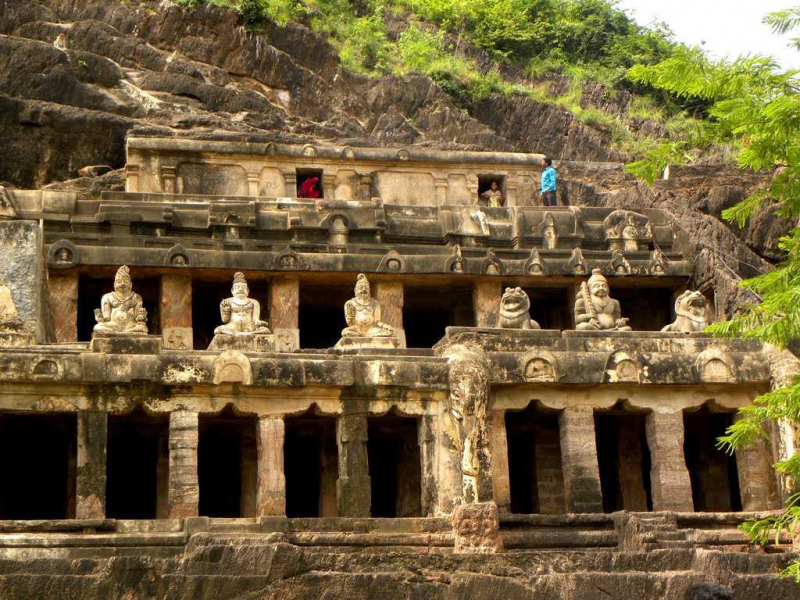
holidify.com -
The Khandagiri and Udayagiri Caves recall the Kalinga Empire's memory of the Jain emperor Kharvela. The two hills separated by a road have roughly 40 rock cut caves adorning them. Mahavir, the founder of the Jain faith, is thought to have visited Udayagiri and Khandagiri in the 6th century B.C. Modern scholars may be found in the Udayagiti's Rani and Hati Gumpha with descriptions of Orissa's dance tradition dating back to the 2nd century B.C. According to modern academics, the Udayagiri cave complex was also a theatrical complex. Emperor Kharvela was a devoted supporter of the arts.
It's probable that he built the caves for both Jain ascetics and cultural performances. Climbing the hill will reward you with a beautiful view of the city. Every Saturday morning at 6.30 a.m., Ekamra Walks offers free guided walking tours of the Khandagiri hills.
Location: Bhubaneswar in Odisha, India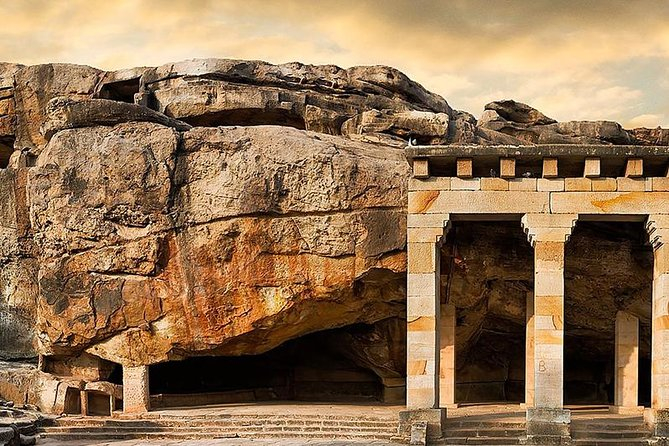
viator.com 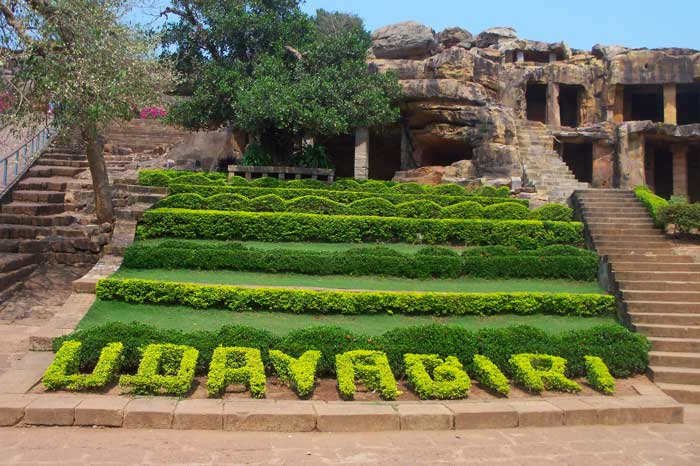
asimustsee.nic.in -
Tabo is a small town in Himachal Pradesh's Lahaul and Spiti region, located on the banks of the Spiti River. At an elevation of 10,760 feet, the freezing desert town is flanked by Himalayan scree slopes and snow-capped peaks. Tabo, known for its quiet and tranquil beauty, is a must-see destination for anyone seeking an out-of-the-ordinary trip. The town is around 40 kilometers from the Indian-Tibetan border, and you'll very certainly pass through it on your trip from Kaza to Reckong Peo by road.
One of Tabo's most well-known features is a 1000-year-old monastery that the Dalai Lama himself regards as one of the holiest. There are also several temples on the list, as well as several historic caves that were formerly home to Buddhist monks seeking refuge from the severe winters. Thousands of Buddhists from India and throughout the world watched the Dalai Lama execute the ancient Kalachakra Initiation here in 1996. The village is also known for growing apples, and some of the best and crunchiest red apples can be found here. A trip to Tabo will undoubtedly revive your mind and body if you wish to get away from the rush and bustle of everyday life.
Location: Himachal Pradesh, India
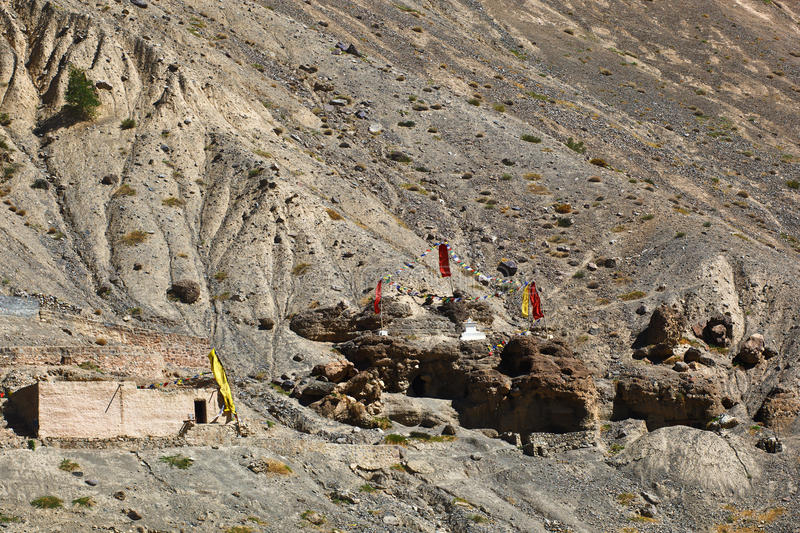
tourtravelworld.com 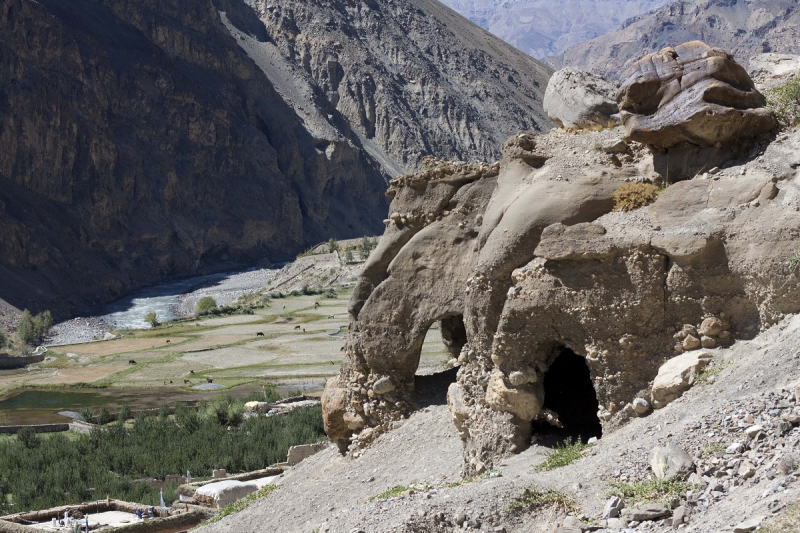
tourtravelworld.com -
Have you read Autobiography of a Yogi, by Paramahansa Yogananda? In the cave where Mahavatar Babaji imparted Kriya Yoga to his pupil Lahiri Mahasaya in 1861, you can meditate. Babaji, who is supposed to have maintained his physical appearance for many centuries, is still present in the area. The Yogoda Satsanga Society, which was founded by Paramahansa Yogananda and has an ashram in the region, is in charge of the cave. It is open from 11 a.m. to 2 p.m. every day. In addition, Dunagiri Retreat has a beautiful view of the cave and is a relaxing location to stay. The cave can be reached by hiking through the forest.
Mahavatar Babaji Cave is one of the most spiritual caves in the Himalayan region, and it is where Yoga Guru Lahiri Mahasaya received direct Kriya Yoga teachings from Mahaavatar Baba Ji. Every day, a large number of pilgrims and Kriya Yogis from various gurus visit the cave. Devotees are advised to read Chapter 34 of the Autobiography of a Yogi, "Materialising a Palace in the Himalayas," and "A Blessing from Mahavatar Babaji" from Sri Sri Daya Mata's Only Love to gain a better understanding of the cave's historical significance. Mahavtar Babaji's Cave is the birthplace of Kriya Yoga in this Dwapara Yuga, as it is where Babaji started Lahiri Mahasaya in 1861. The ancestry of all Kriyabans in the world may be traced back to this incident. (The 150th Anniversary of Kriya Yoga is in 2011)
Location: Himalayan Region
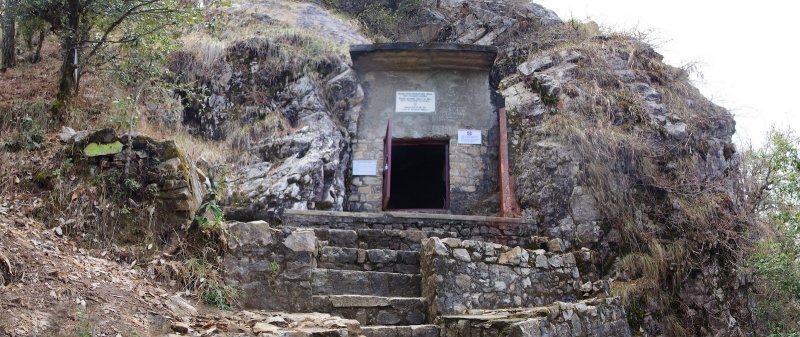
mundotraveller.blogspot.com














